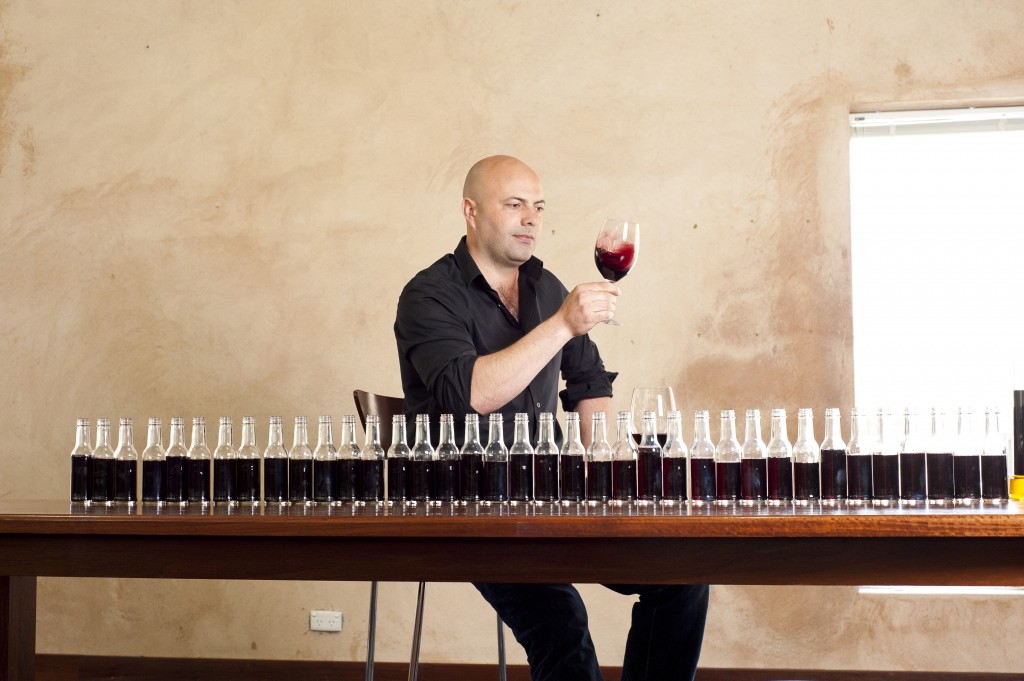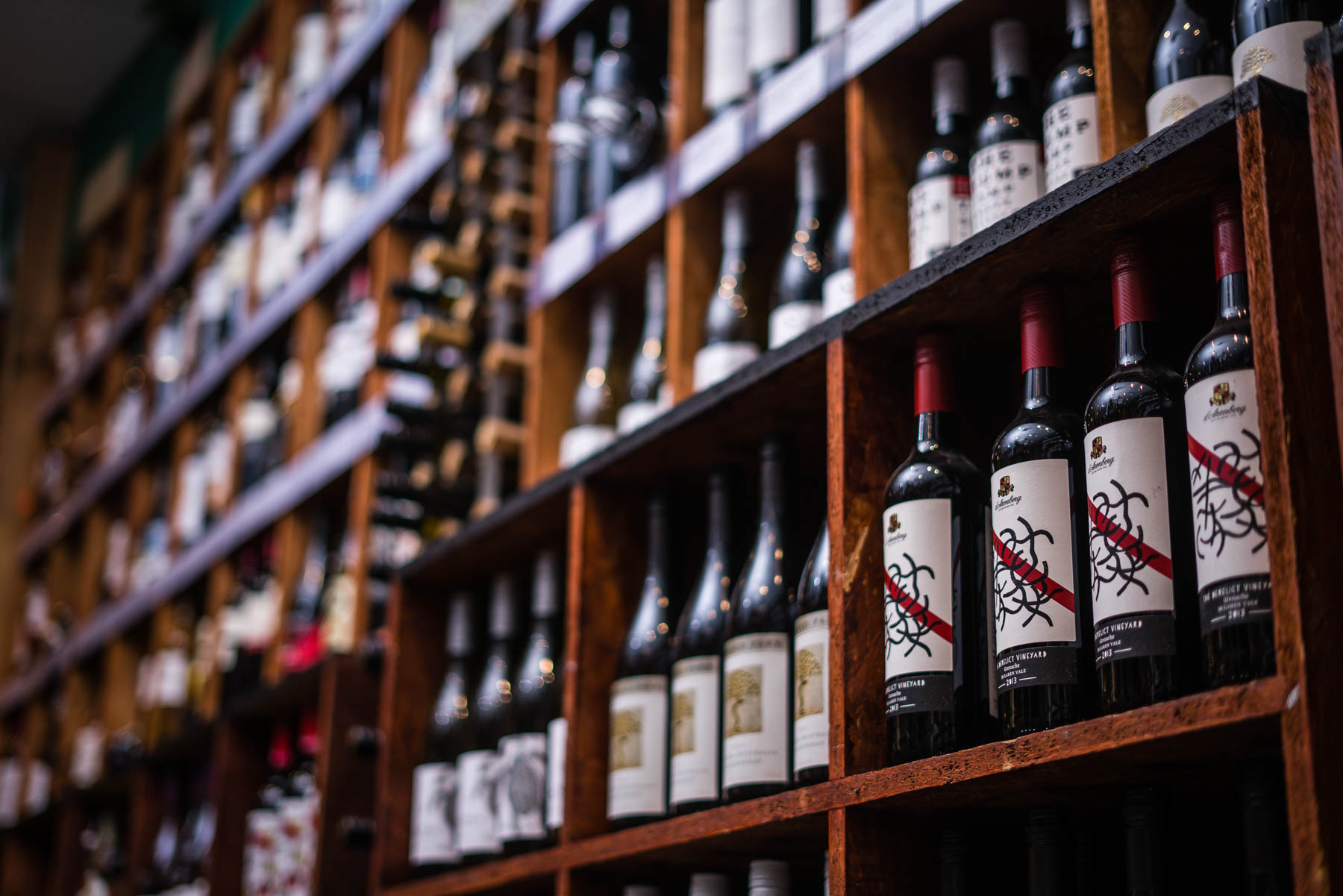How to Taste Wine – and Why…
Posted by Laura on 7 Apr 2015
In my latest Back to Wine School blog, I'm looking at why, and how, we should taste wine to get the very best of enjoyment out of every bottle that we buy.
Wine tasters and writers are often the butt of jokes – Why do we swirl the wine around the glass? Why do we take a big sniff of the wine before we taste it? And why do we make those horrendous slurping noises, before we spit the wine out? In fact, this ritual becomes so second nature to those of us who taste wine for a living, that many of us, including me, have been caught absent-mindedly swirling and sniffing at a glass of water at the dinner table!
Getting the best out of wine is no different than enjoying the subtleties of spicing and flavourings in food. Scents of food are incredibly evocative – freshly baked bread, a spicy, ginger-and-coriander-infused laksa, or the comforting smell of the Sunday roast… it’s no different with wine; you just need to be prepared to give it that little extra time. It’ll help you enjoy the wine more; work out what you do and don’t like; and also help you to work out when something is wrong with a wine.
There are 3 main steps: Look, Smell, Taste
Look
The colour of a wine is always the first indicator of its style. Swirl the wine around the glass and have a look at the depth of colour and clarity. One of the reasons we swirl wine around it will also show the viscosity of the wine – if the liquid clings to the side of the glass, and is almost syrupy, it has ‘legs’. Sweet dessert wines and big, concentrated reds have more viscosity than lighter styles.

What can we learn from the colour and the look of a wine?
1. Pour Champagne or sparkling wine into a tall flute and observe. The best sparklers will have a persistent stream of tiny little bubbles racing to the top of the glass.
2. Light, fresh, unoaked whites should be pale yellow in colour, sometimes with a slightly greenish hue, limpid and glinting in the glass, reflecting the freshness of the wine.
3. Oaked whites - which have been matured - and dessert wines will be more golden in colour. White wines gain colour as they age: this is fine for classic aged Burgundy, old Rieslings and Semillon that are built to last. However, if you pour a supposedly unoaked, younger wine and see a dark golden colour appear, it means the wine is either too old or is oxidised.
4. The colour of red wines is an easy indicator of the age and the style - lighter, fruitier, low-tannin wines from the Pinot Noir and Gamay grape tend to be lighter in colour, and have a lovely ruby-like gleam. If you can see the bottom of the glass through the wine, it’s likely to be a softer, lighter style of red.
5. Intense, dark red to purple coloured wines will be relatively young: Deep, blood-red, opaque reds indicate richer, more concentrated styles.
6. Wines which are starting to pale in colour, or are developing a brownish tinge, are showing maturity – this is fine in full-bodied reds, which are made to age and evolve; however, if your supposedly light, fruity, unoaked young red is showing these signs, it’s likely that it may be oxidised, or older than you think.

Smell
I see so many people pour a glass of wine, pick it up and sip it, without bothering to find out what it smells like. That’s like being served a plate of fragrant wild mushroom and truffle risotto, or a bowl of early summer strawberries, and not smelling them.
Smell is an evocative sense, and enhances our enjoyment of just about everything, including wine. So, what benefits do we add to our enjoyment of wine by smelling it?
1. Swirling the wine around the glass will allow the oxygen in the air to get into the wine and release the aromas and flavours. It’s like zesting a lime and getting a whack of that deliciously vibrant-scented freshness; or picking fresh herbs, bruising them slightly and picking up their pungent aromas.
2. There are myriad different aromas and scents in wine – you may not be able to identify them, but you’ll know if you like them – and if someone mentions that a wine smells like fresh peaches, or wild thyme, it makes it easier to pinpoint those aromas.
3. With white wines it’s normally about freshness and vibrancy. Different grape varieties have different aromas – Chardonnay has scents of baked apple, and peach, with a creamy style; Sauvignon is all about fresh lime, passion fruit and zesty gooseberry, whilst Viognier has wafts of apricot. These are wild generalisations, but they should help give you some ideas.
4.Smell a rosé wine and you should to be finding joyful, exuberant aromas of strawberries and raspberries.
5. When it comes to red, there’s an entire cornucopia of aromas: From fresh, bright, red-berry-fruity, light and young wines, through to the scented, perfumed violet and raspberry wafts of Pinot Noir - and that's just for starters. Cabernet Sauvignon often smells of blackcurrants and mint; Merlot has a rich plum and milk chocolate character; whilst Rhône wines and Shiraz have bold, spicy, wild herb scents. In Italian wines you'll smell wild cherries, while Rioja is full of sweet vanilla and strawberry fruit.
Taste
The taste of a wine is what will ultimately make you decide whether you like it or not. It’s all about flavour, and that combination of freshness, fruitiness, depth, richness, acidity, sweetness… that’s why we wine tasters make all those ghastly swooshing, or gargling sounds, as we taste a wine!
Why do we do it? By Swirling the wine around the mouth, it brings air and oxygen in, and releases even more flavours, so we get the most enjoyment out of what’s in the glass. I’m not suggesting that you do the same, but just gently let the wine linger in your mouth, and enjoy the complexity of flavours.
So what are we looking for?
 1. There are a multitude of different flavours and styles of wine – the most important question is, do you like it? You can learn a lot about the styles of wine you really enjoy just by spending a couple of minutes taking notice of what’s in your glass.
1. There are a multitude of different flavours and styles of wine – the most important question is, do you like it? You can learn a lot about the styles of wine you really enjoy just by spending a couple of minutes taking notice of what’s in your glass.
2. It’s all about balance - I mean the right mix of fruit, freshness, acidity, sometimes oak, and, in red wines, tannins. For instance, a red wine might have a lovely aroma of rich, plummy fruit, but then harsh tannins (which can make the sides of your mouth pucker) take over on the palate. What you are looking for is balance – a fresh, zesty white, full of citrus tang, needs a refreshing kick of acidity on the finish to give it that extra zing, otherwise it promises, but does not deliver. Richer whites need to balance the oak element with enough creamy, fruity richness, and reds, once again, need that mix of fruit, and integrated soft tannins.
3. Finally, the ‘finish’ – this is the part where you have tasted and swallowed the wine, but hopefully the flavour lingers, and reveals even more hidden charms, as the taste develops in the mouth – it’s that smooth, all-enveloping, satisfying moment when you realise that you have really enjoyed a great glass of wine!
Take a few more seconds, and gain lots more enjoyment of every glass you drink!
By Angela Mount

